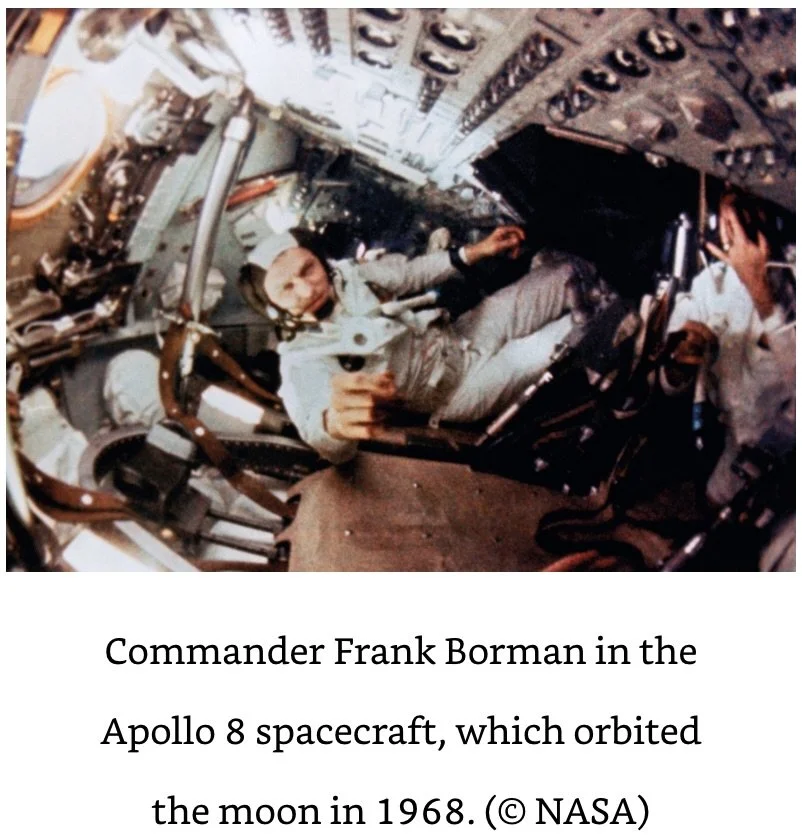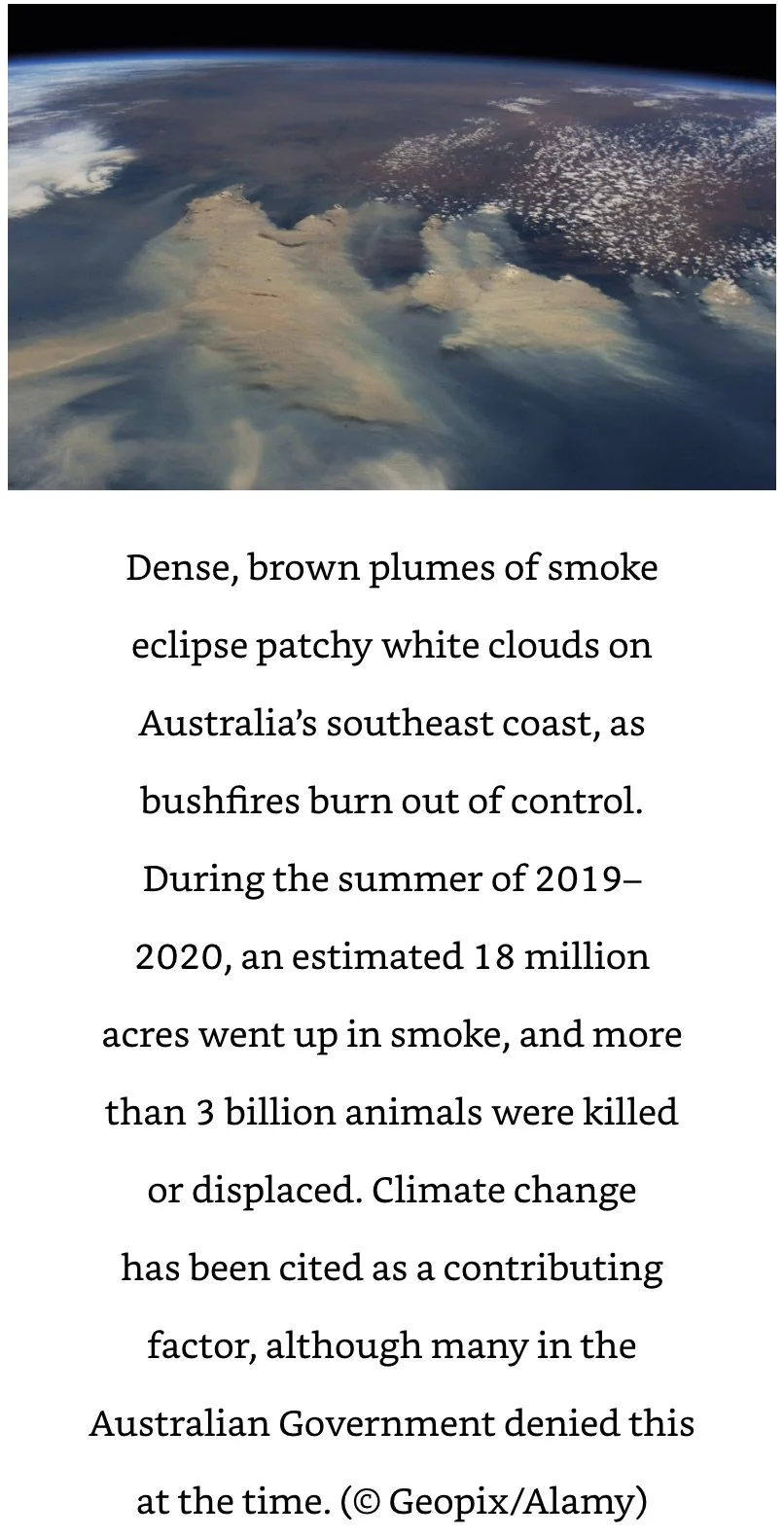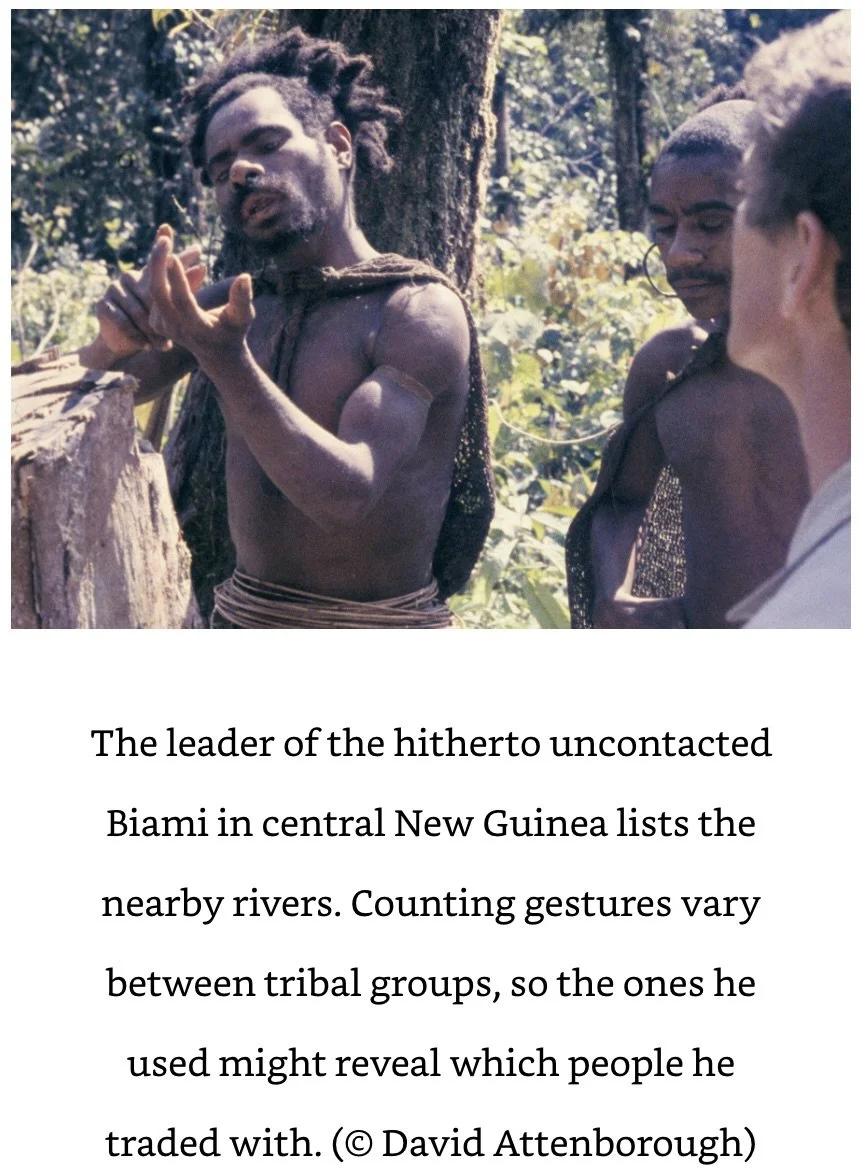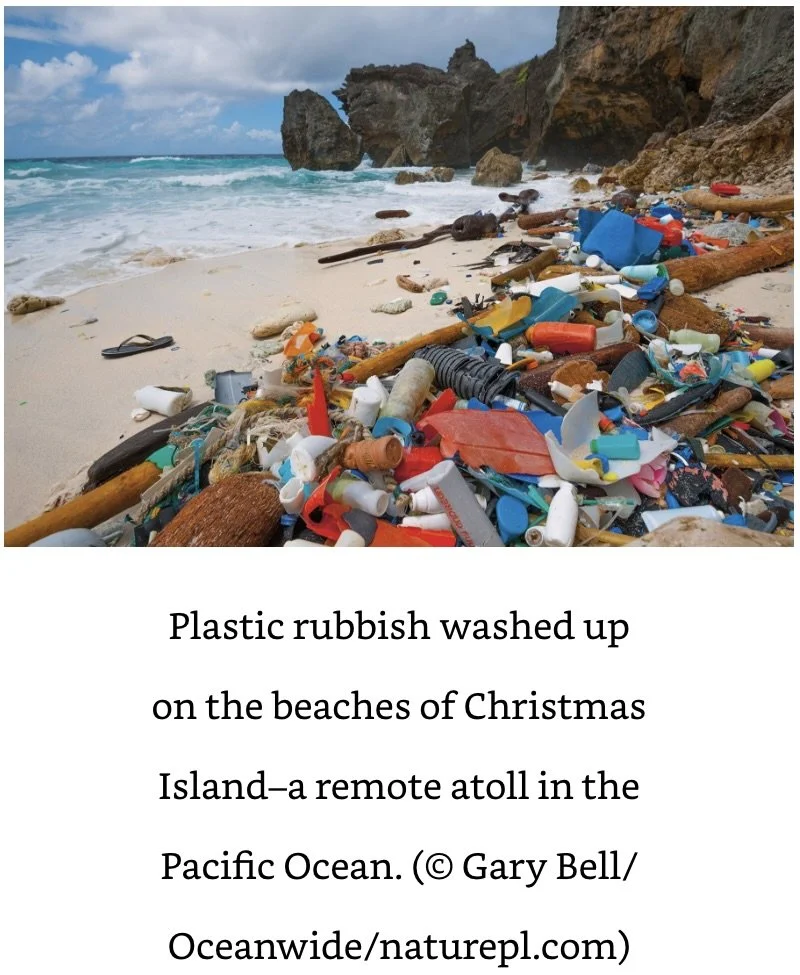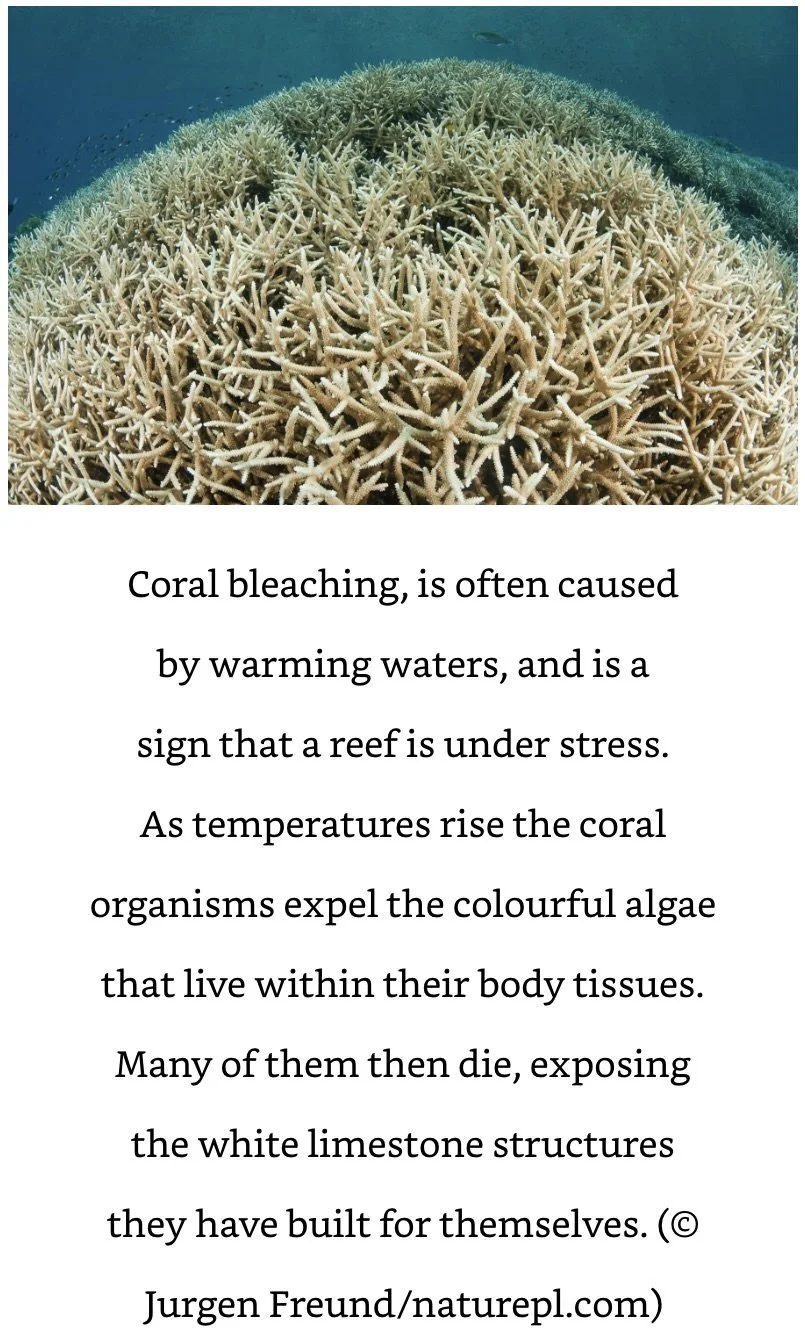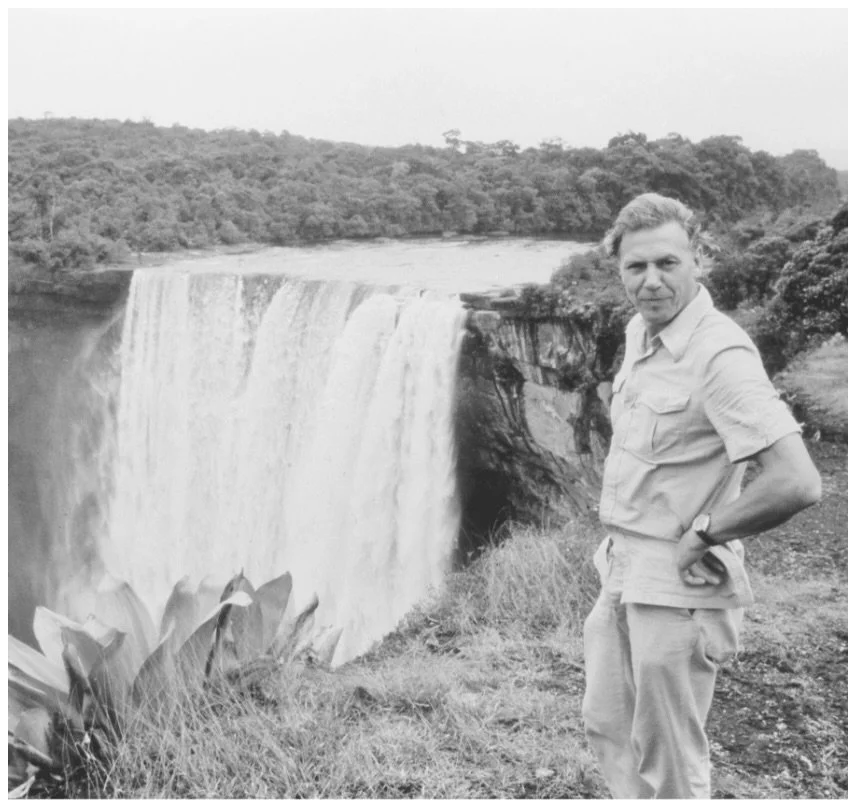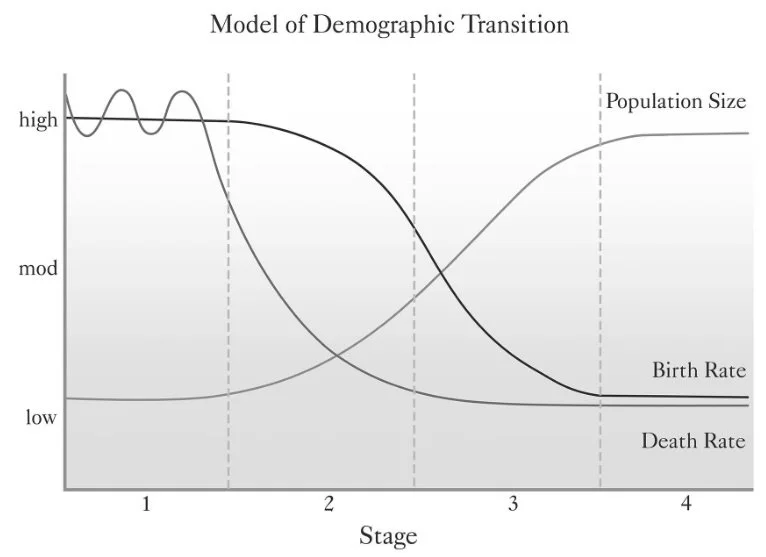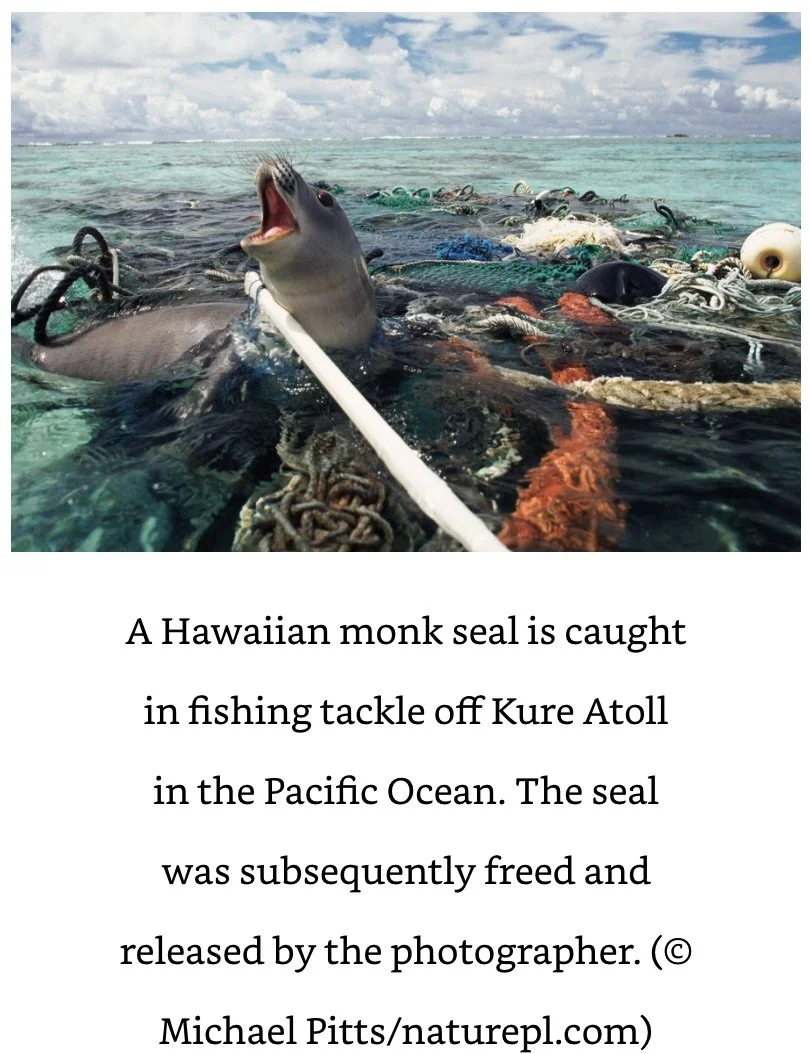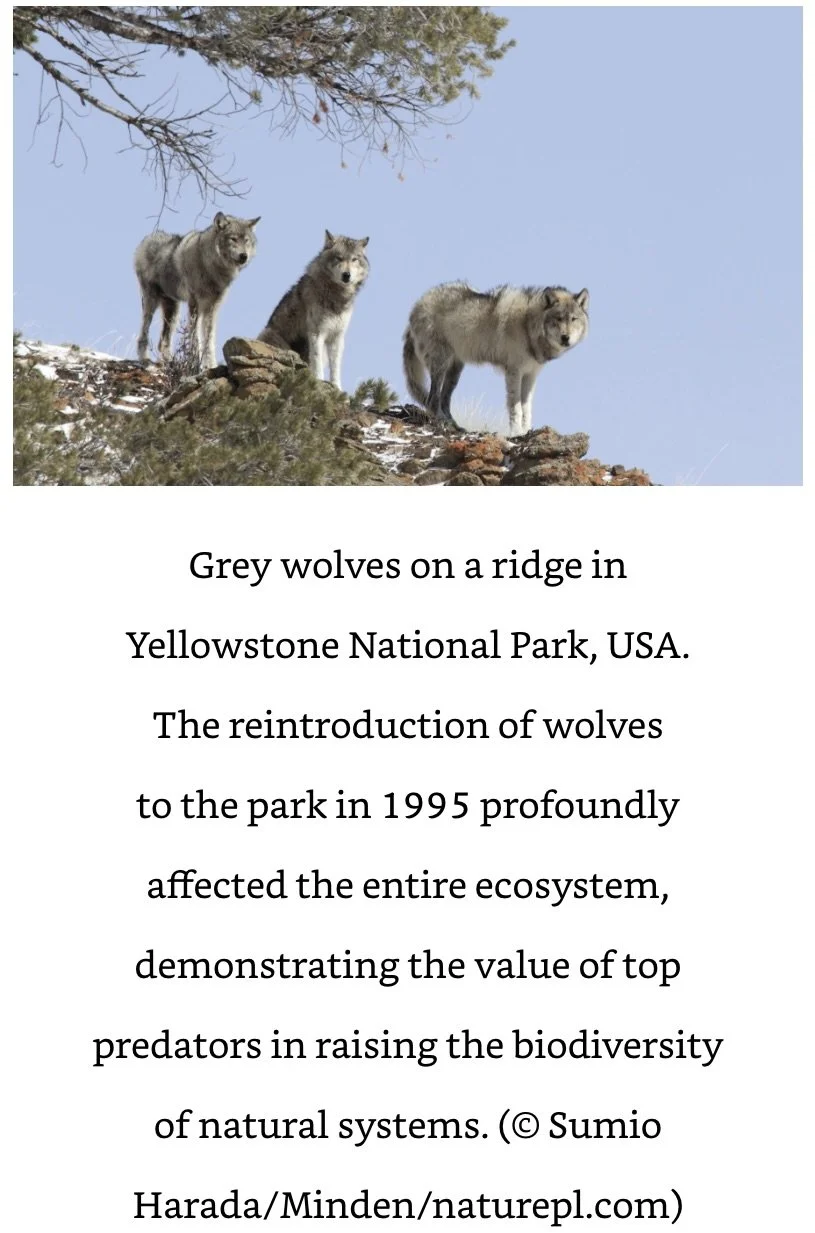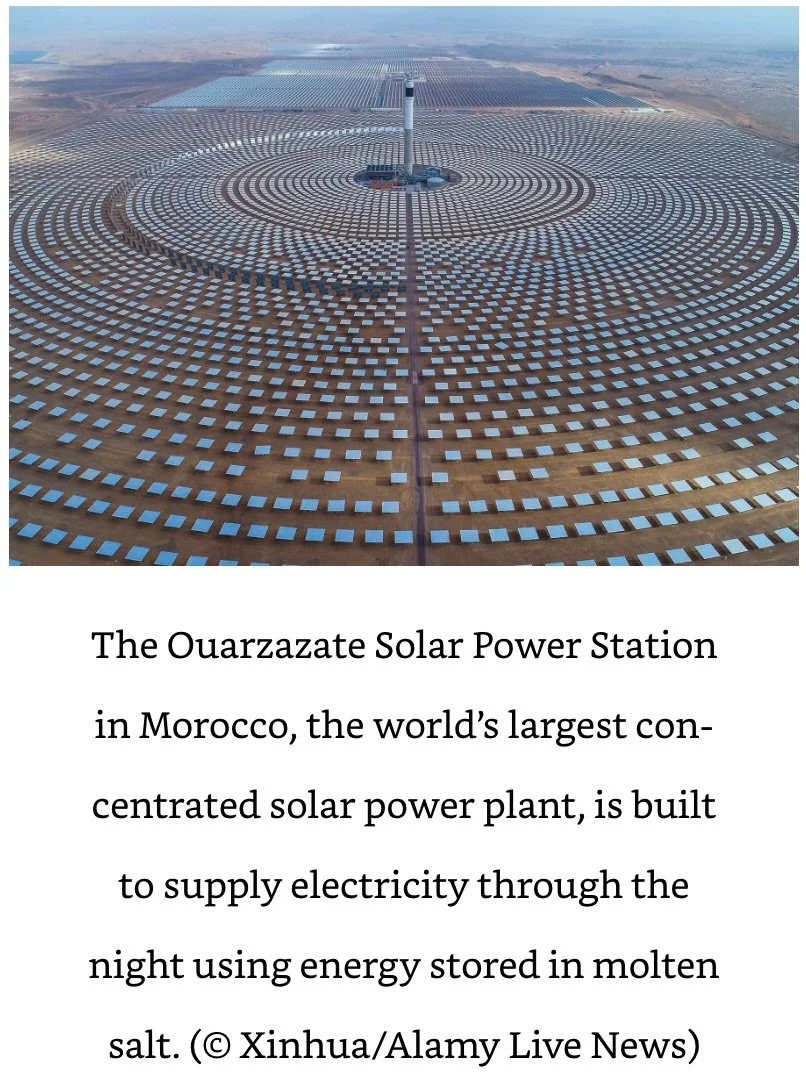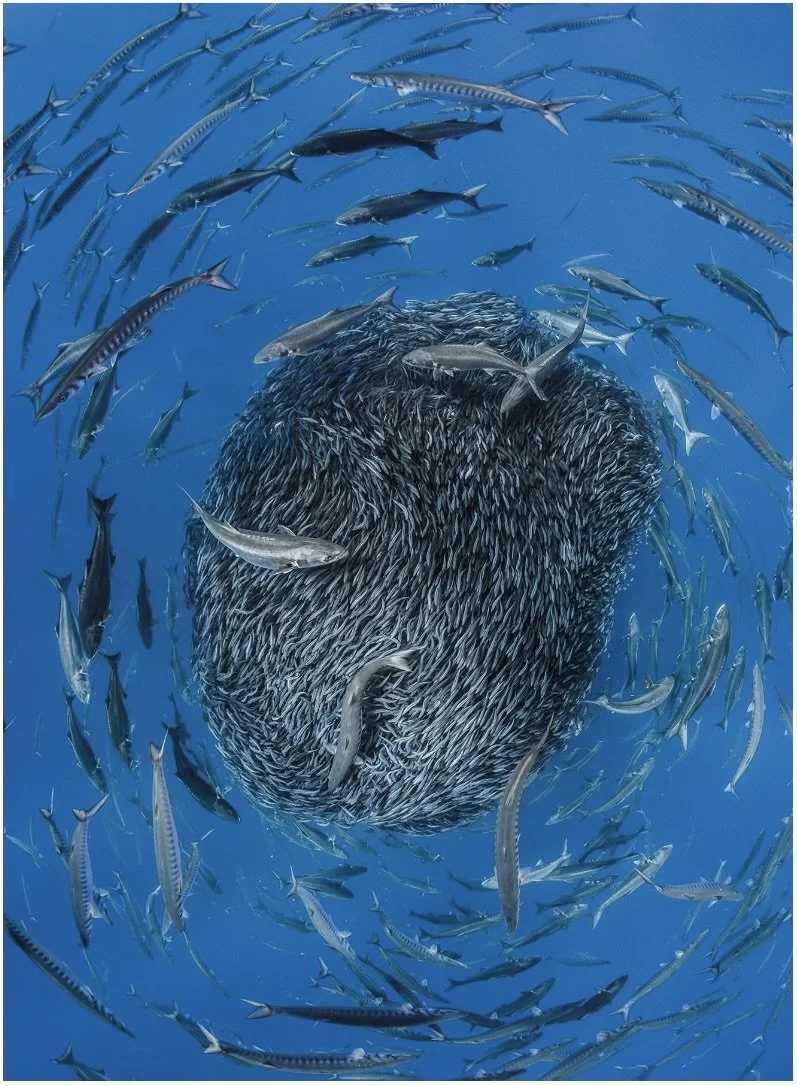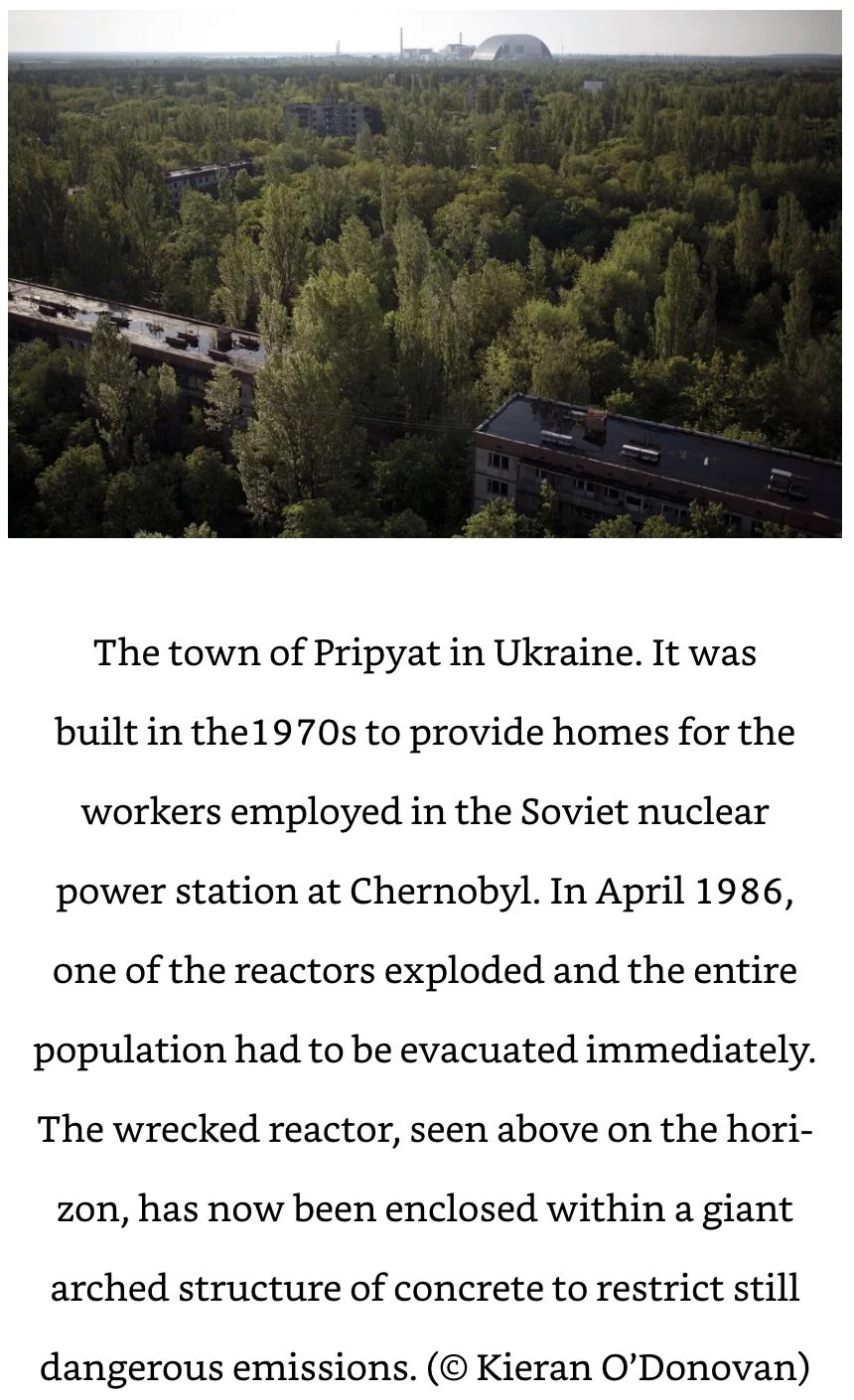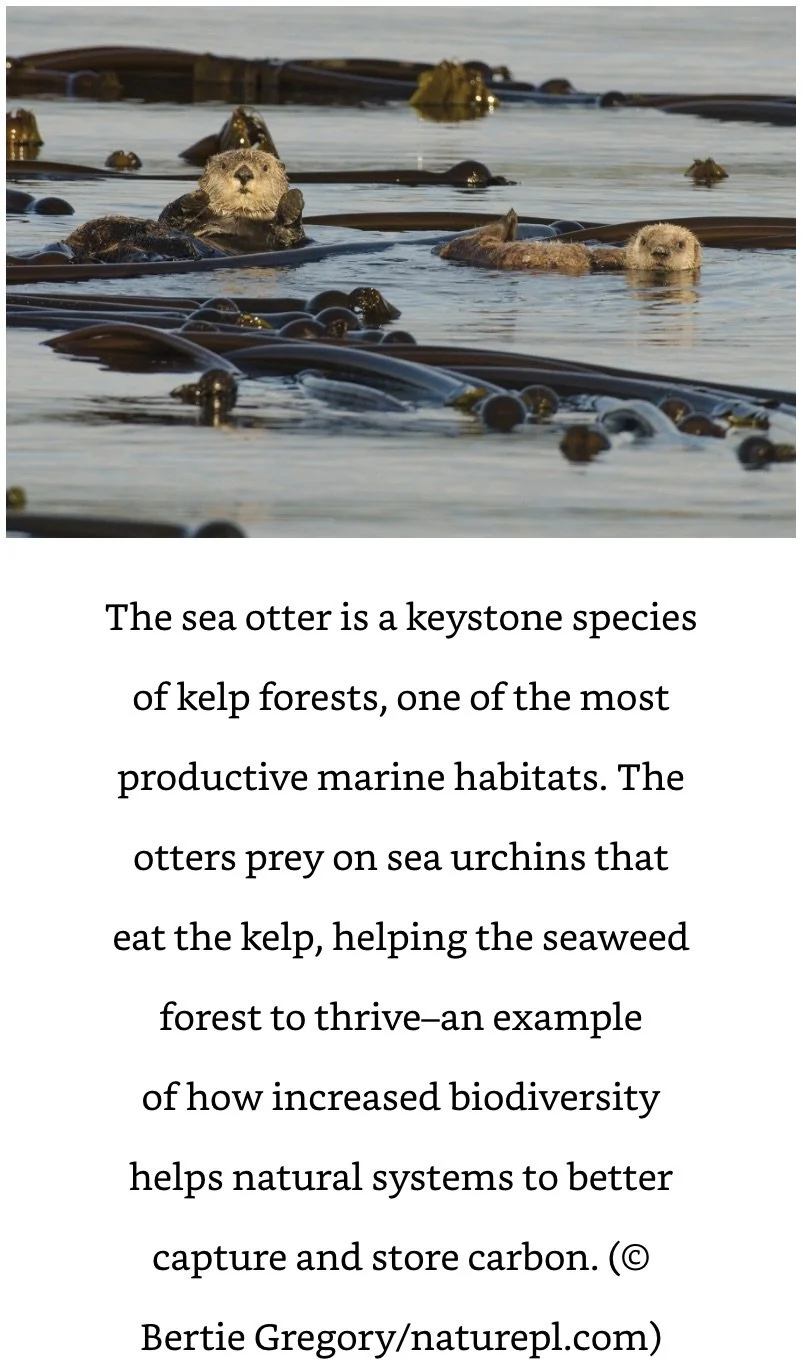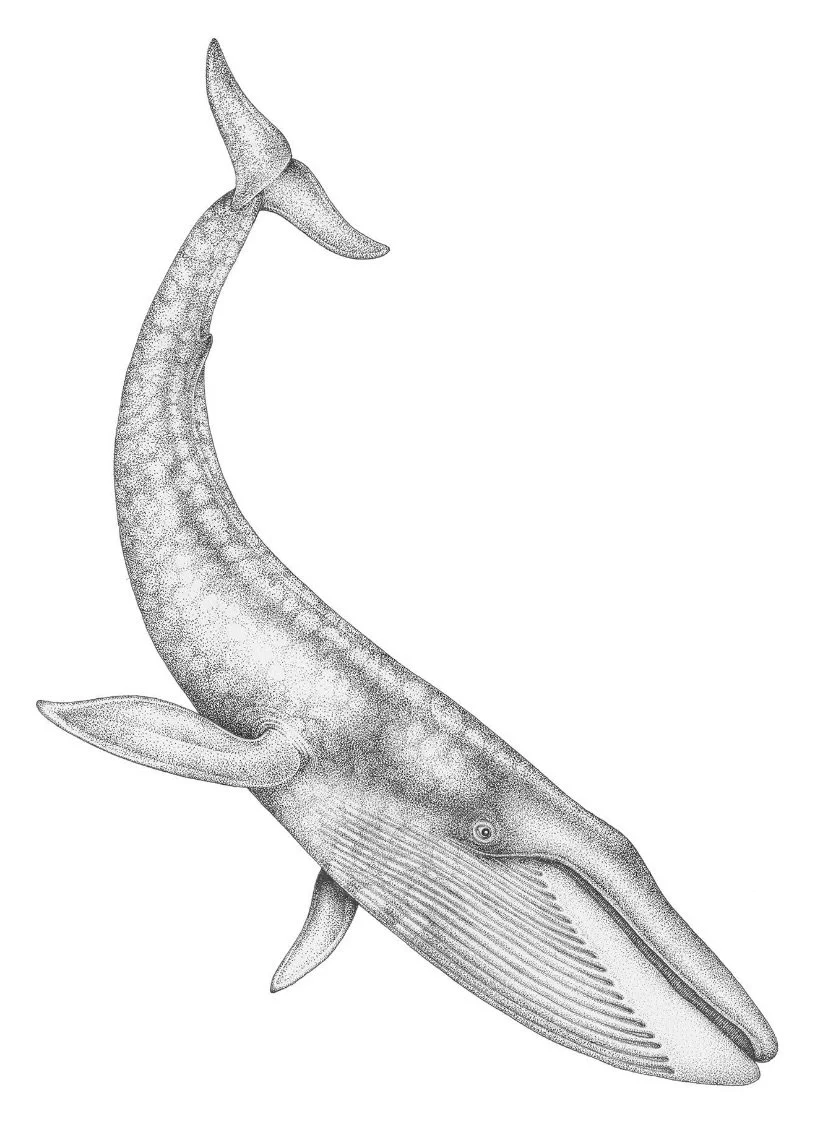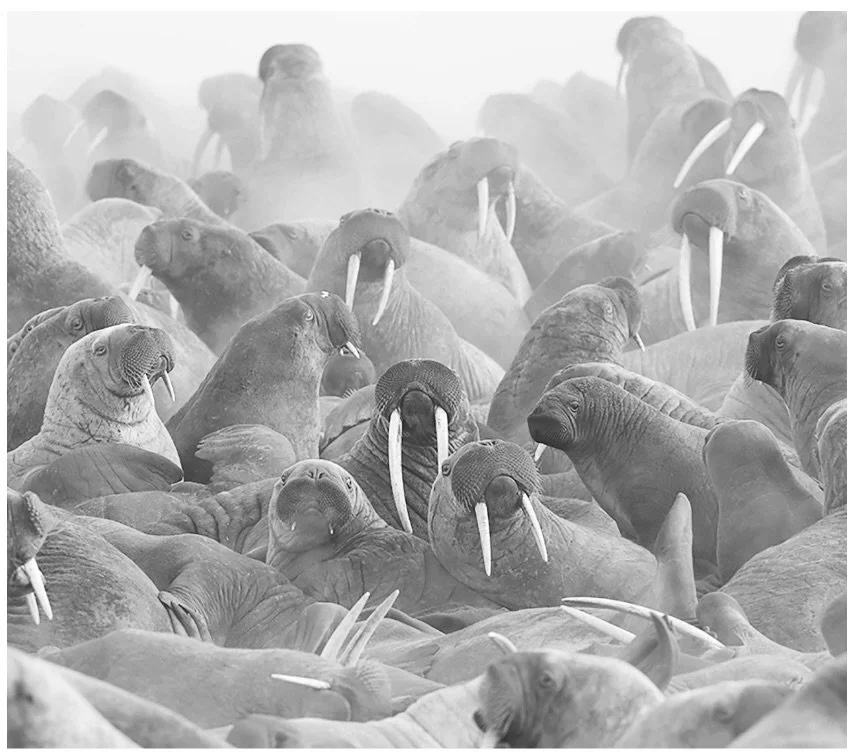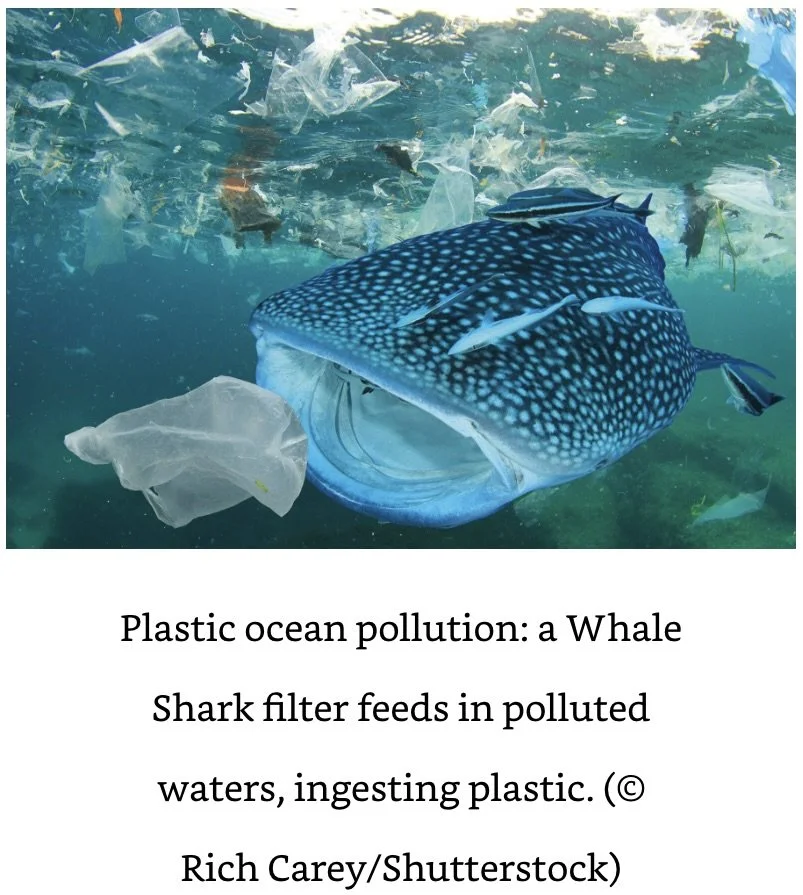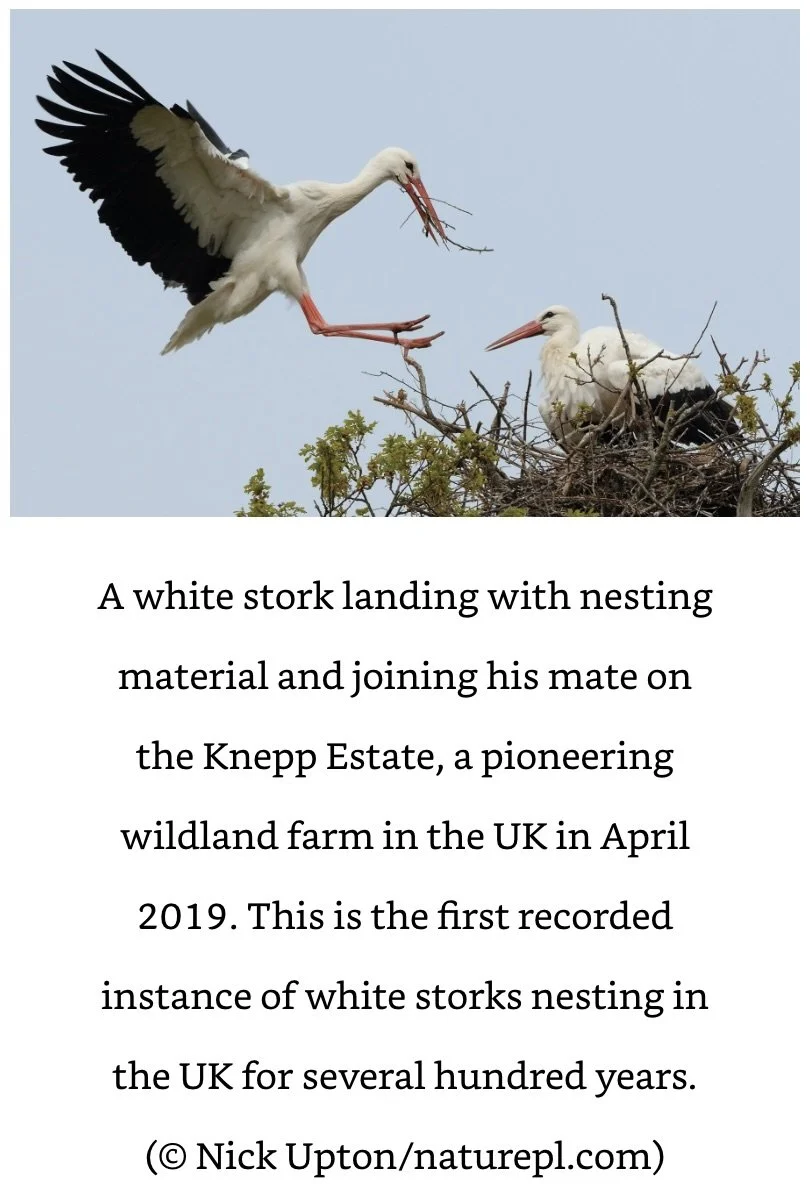A Life on Our Planet by Attenborough
Ref: David Attenborough (2020). A Life on Our Planet. Hachette Books.
___________________________________________________________________________
Summary
We live our comfortable lives in the shadow of a disaster of our own making. That disaster is being brought about by the very things that allow us to live our comfortable lives. And it is quite natural to carry on in this way until there is a convincing reason not to do so and a very good plan for an alternative. That is why I have written this book.
“I believed from a very early age that the most important knowledge was that which brought an understanding of how the natural world worked. It was not laws invented by human beings that interested me, but the principles that governed the lives of animals and plants; not the history of kings and queens, or even the different languages that had been developed by different human societies, but the truths that had governed the world around me long before humanity had appeared in it.”-David Attenborough.
We do not have a special place. We are not the preordained and final pinnacle of evolution. We are just another species in the tree of life. Nonetheless we have broken free from many of the constraints that affect all other species.
If every nation were to set profit, people and planet targets for itself as New Zealand does, offer a standard of living for its population as high as Japan’s, embrace the renewable revolution like Morocco, manage its seas like Palau, farm plants as efficiently and sustainably as some are doing in the Netherlands, eat meat rarely like the people of India, encourage the wild to return as Costa Rica has, and build nature into its cities like Singapore, the whole of humanity would be able to achieve a balance with nature. But it will take every nation, and those with the greatest footprints to make the biggest changes. It won’t work if some countries make the transition and others don’t.
In a thriving, sustainable future, we would follow a largely plant-based diet, filled with healthier alternatives to meat. We would use clean energy for all our needs. Our banks and pension funds would only invest in sustainable business. Those of us that choose to have children would be likely to have smaller families. We would be able to choose wood products, foodstuffs, fish and meat thoughtfully, informed by the detailed information available with every purchase. Our waste would be minimal. The little C our activities still emit would be offset automatically within the purchase price, funding rewilding projects all over the world.
___________________________________________________________________________
Part One: My Witness Statement
The Holocene was humanities Garden of Eden…the Middle East…lie on the crossroads between three continents–Africa, Asia and Europe–so, for millions of years, species of plants and animals from all three have both passed through and established themselves here. The hillsides and floodplains were colonized by plants such as the wild ancestors of today’s wheat, barley, chickpea, peas and lentils–all species that produce seeds so rich in nutriment that they can survive the prolonged dry seasons. Such edible morsels must have attracted people every year…Wild cattle, goats, sheep and pigs all existed naturally in this region.
Early agriculture innovations include the building of grain stores, herding, digging irrigation channels, tilling and planting, adding manure.
The habit of farming started independently in at least 11 separate regions around the world.
Farmers’ work was hard. They suffered frequent droughts and famine. But eventually they were able to produce more than they needed for their own immediate requirements. Compared to their hunter-gathering neighbours, they were able to raise bigger families. These extra sons and daughters were useful, not only to tend the crops and livestock, but to assist their family in retaining possession of its fields. Farming made land more valuable than it had been in its wild state, and the farmers began to build more permanent shelters to maintain their claims. The plots belonging to different families inevitably varied in soil type, water availability and aspect. So some crops and herds fared better than others. After feeding the family, the farmers were able to use any surplus to trade. Farming communities came to gather at open markets to barter their wares. They began to exchange food for other assets and for skills. The farmers needed stone, twine, oil and fish. They wanted the products of carpenters, masons and toolmakers, who now for the first time were able to trade for food rather than spending time growing it. As the number of trades increased, the markets developed into towns and then cities in many of the fertile river valleys.
The size of terrestrial animals is limited by the mechanical strength of bone: above a certain weight, bone breaks. Aquatic animals, however, are supported by water so whales can grow much bigger than any land animal.
Humpback whale songs are long and complex, and of such low frequency that they can carry for hundreds of kms through the water. Humpbacks living in the same part of the ocean, learn their songs from each other. Each song has its own distinct theme on which each individual male will invent his own variations. These change over time.
Orangutan mothers spend 10y with their single babies, teaching them when and how to collect dozens of different fruits. Being large animals and almost entirely vegetarian, they consume a great deal each day and have to travel continuously in search of crops of ripe fruit.
Life on Earth almost certainly began as microbes living around jets of hot water discharging from vents in the ocean floor, several km below the surface…The early marine microbes had metabolisms that released CH4 as a by-product. It bubbled to the surface and slowly changed the Earth’s atmosphere. Earth was a much cooler place at the time. CH4 is a GHG 25x more potent than CO2, and its presence in the atmosphere caused the planet to begin to warm, so helping life to proliferate. Later, microscopic organisms called cyanobacteria began to photosynthesize, using energy from the Sun’s rays to build their tissues. The exhaust gas of the process–O–caused a revolution. It became the standard fuel for a much more efficient way of extracting energy from food, and so paved the way for the establishment of all complex life. Cyanobacteria still constitute a significant part of the phytoplankton that floats today in the upper levels of the ocean, You and I, and all the animals with which we share the land, are all ultimately descended from marine creatures.
The ocean routinely has chains with four, five and more links. Microscopic phytoplankton are eaten by barely visible zooplankton; that in turn is eaten by small fry, which are then taken by a series of fish of increasing size with bigger and bigger mouths.
There are fewer fish in the sea today. We don’t realize that this is so because of a phenomenon called the shifting baseline syndrome. Each generation defines the normal by what it experiences. We judge what the sea can provide by the fish populations we know today, not knowing what those populations once were. We expect less and less from the ocean because we have never known for ourselves what riches it once provided and what it could again.
In the late 1960s, American biologist Roger Payne turns from recording the ultrasonic sounds of bats to investigating claims from the USN that there were songs in the ocean. The Navy had set up listening stations for Soviet subs and, as well as the signature sound of propellers, they were detecting strange almost musical serenades. Payne discovered that the chief source of these songs were the 5,000 or so humpback whales that were still alive at the time. His recordings revealed that humpback songs are long and complex, and of such low frequency that they can carry for hundreds of kms through the water. Humpbacks living in the same part of the ocean, learn their songs from each other. Each song has its own distinct theme on which each individual male will invent his own variations. These change over time.
Coral reefs are built by tiny animals called polyps, related to jellyfish. They have simple bodies consisting of little more than a stalk containing a stomach with a ring of tentacles on top surrounding a mouth. The tentacles have stinging cells which stab passing microscopic prey and convey it into the mouth, which then closes while the polyp digests its capture before reopening for its next meal. These coral polyps build walls of CaCO3 to protect their soft bodies from hungry predators. Eventually, they become huge stony structures, each species creating its own architectural form. Growing together, they build up into great reefs.
The colours of the corals come not from the polyps but from symbiotic algae living within their tissues called zooxanthellae. These are able to photosynthesize like other plants. So, as a partnership, the coral polyps and their algal tenants get the benefit of being both plant and animal. During the day, the joint enterprise bathes in the sunlight, the algae using the light to create sugars which supply the polyps with up to 90% of the energy they need. At night, the polyps continue to collect prey. From these meals their algal partners extract the nourishment they require to do their job, and the polyps continue to build their CaCO3 walls upwards and outwards, so maintaining the colony’s position in the sunlight.
The bleaching that the Blue Planet crews encountered in 1998 was happening because the corals were becoming stressed and ejecting their algae, exposing the bone-white of their CaCO3 skeletons. Without their algae, the polyps diminish. Seaweeds begin to colonize the site, smothering the coral skeletons and the reef then turns, with alarming speed, from wonderland to wasteland…Bleaching often occurs where the ocean is rapidly warming.
Walruses live largely on clams that grow on a few particular patches of the seafloor in the Arctic.
In 2020 we are extracting over 80M t of seafood from the oceans each year and have reduced 30% of fish stocks to critical levels. Almost all the large oceanic fish have been removed. We have lost about half of the world’s shallow-water corals and major bleaching’s are occurring almost every year. Our coastal developments and seafood farming projects have now reduced the extent of mangroves and seagrass beds by >30%.
We have interrupted the free flow of almost all the world’s sizeable rivers with >50,000 large dams.
Our assault on freshwater systems has reduced the animals and plants that live in them more severely than those in any other habitat. Globally, we have reduced the size of their animal populations by over 80%.
Currently we cut down over 15B trees each year. The world’s rainforests have been reduced by half. The top driver of continuing deforestation, which doubles that of the next three greatest cases combined, is beef production. Brazil alone devotes 170M hA of its land, an area 7x the size of the UK, to cattle pasture. Much of that area was once rainforest. The second driver is soy. Growing soy uses some 13M hA, much of it in South America. Over 70% of this soy is used to feed livestock being raised for meat. Third is the 21M hA of oil palm plantations, mostly in SE Asia.
96% of the mass of all the mammals on Earth is made up of our bodies and those of the animals that we raise to eat. Our own mass accounts for one third of the total. Our domestic mammals–chiefly cows, pigs and sheep–make up just over 60%. The remainder–all the wild mammals, from mice to elephants and whales–account for just 4%.
___________________________________________________________________________
Part Two: What Lies Ahead
When a few bacteria are placed on a bed of food in a sterile, sealed dish–a perfect environment, free from competition, sitting on abundant nutrients–they take some time to adapt themselves to the new medium–a period called the lag phase. This can last just one hour, or a few days, but at some point it ends suddenly–the bacteria solve the problem of how to exploit the conditions of the dish, and begin to reproduce by dividing, doubling their population as frequently as every 20 minutes. So begins the log phase, a period of exponential growth, the bacteria splitting and spreading in surges across the surface of the food. Each individual bacterium grabs its own plot and seizes what it needs. Ecologists call this a scramble competition–every bacterium for itself! It’s a type of competition that does not end well in a closed system such as the finite, sealed dish. When the bacteria reproduce to such a degree that they reach the edge, every individual cell will begin to disadvantage every other at the same moment. The food begins to run out beneath the bacteria. Exhaust gases, heat and effluents begin to accumulate and poison with increasing speed. Cells start to die, tempering the growth rate of the population for the first time. These deaths also occur exponentially due to the worsening environment, and soon there is a moment when the death rate and the birth rate equal each other. At that point, the population has peaked, and may plateau for a period. But within a finite system, this won’t continue forever–it’s not sustainable. Food starts to run out everywhere, the gathering waste becomes deadly throughout the dish, and the colony crashes as quickly as it rose.
A team of leading Earth system scientists led by Johan Rockström and Will Steffen has studied the resilience of ecosystems across the globe. They looked carefully at the elements that have enabled each ecosystem to function so reliably during the Holocene, and tested with modelling at what point each of these ecosystems would start to fail…They found nine critical thresholds hard-wired into Earth’s environment–nine planetary boundaries. If we keep our impact within these thresholds, we occupy a safe operating space, a sustainable existence. If we push our demands to such an extent that any one of these boundaries is breached, we risk destabilizing the life-support machine, permanently debilitating nature and removing its ability to maintain the safe, benign environment of the Holocene…We have already pushed through four of the nine boundaries. We are polluting the Earth with far too many fertilisers, disrupting the N and P cycles. We are converting natural habitats on land–such as forests, grasslands and marshlands–to farmland at too great a rate. We are warming the Earth far too quickly, adding C to the atmosphere faster than at any time in our planet’s history. We are causing a rate of biodiversity loss that is >100x the average, and only matched in the fossil record during a mass extinction event.
The Amazon rainforest is on course to be reduced to 75% of its original extent by the 2030s. Although still large, this may prove to be a tipping point for the Amazon, triggering a phenomenon known as forest dieback. The forest becomes suddenly unable to produce enough moisture from its diminished canopy to feed the rainclouds, and the most vulnerable parts of the Amazon degrade firstly into a seasonal dry forest, then an open savannah. The decline is self-feeding–the more that dieback occurs, the more it causes further dieback. The drying of the entire Amazon basin is therefore predicted to be swift and devastating.
The Amazon’s greatest environmental service is that, for the whole of the Holocene, >100B t of C has been locked away in its trees.
The Arctic Ocean is expected to have its first entirely ice-free summer in the 2030s…Since the Earth would have less ice, it would be less white each year, meaning less of the Sun’s energy would be reflected back out to space, and the speed of global warming would increase again. The Arctic would start to lose its ability to cool the planet.
2040s: For thousands of years, the permafrost has locked in an estimated 1,400 Gt of Carbon- 4x more than humankind has emitted in the last 200 years, and twice as much as there is in the atmosphere. The thaw would release this C, gradually, over many years, turning on a gas tap of CH4 and CO2 that we would probably never be able to turn off.
2050s: On entering the water, CO2 forms carbonic acid, first in the shallows, then, due to the flows of ocean circulation, throughout the water column. Some predict that 90% of the coral reefs on Earth will be destroyed in the space of a few years.
An estimated 1.7M viruses of potential threat to humans hide within populations of mammals and birds.
2080s: If the current rate of pesticide use, habitat removal and the spread of diseases in pollinators like bees continues, the loss of insects species would come to affect three-quarters of our food crops by the 2080s. Nut, fruit, vegetable and oilseed harvests could fail if unable to rely on the diligent work of insects for their pollination.
2100: Coastal cities worldwide would be facing a predicted sea level rise of 0.9m during the 21c, caused by the slowly melting ice sheets of Greenland and Antarctica, together with a creeping expansion of the ocean as it warms.
Humankind now uses up the equivalent of 1.7x what the Earth can regenerate in a single year.
___________________________________________________________________________
Part Three: A Vision for the Future How to Rewild the World
The planetary boundaries model is designed to keep us on the right path. It tells us that we must immediately halt and preferably start to reverse climate change by attending to GHG emissions wherever they occur. We must end our overuse of fertilisers. We must halt and reverse the conversion of wild spaces to farmland, plantations and other developments. It also warns us of the other things we need to keep an eye on–the ozone layer, our use of freshwater, chemical and air pollution, ocean acidification.
A recent review has estimated that almost 50% of humanity’s impact on the living world is attributable to the richest 16% of the human population.
The University of Oxford economist Kate Raworth adds adding an inner ring to the planetary boundaries model. This new ring holds the minimum requirements of human well-being: good housing, healthcare, clean water, safe food, access to energy, good education, an income, a political voice and justice. It hence becomes a compass with two sets of boundaries. The outer ring is an ecological ceiling below which we must remain if we are to have a chance of maintaining a stable and safe planet. The inner ring is a social foundation that we must aim to raise everyone above to enable a fair and just world.
On a finite planet, the only way to achieve perpetual growth is to take more from elsewhere.
Earth’s plants, together with phytoplankton and algae, capture ~3T KWh of solar energy every day.
The first forests grew in tropical freshwater swamps that covered much of the planet’s land. As the trees died, their bodies fell into the swamps and accumulated underwater, being slowly entombed by sediment brought down by the rivers. Beyond the reach of O and the normal processes of decomposition, their C-laden tissues, buried beneath mud and sand, were compressed and eventually became coal…Subsequently, over several hundred million years, plankton and algae that flourished in ancient seas and stagnant lakes have, on occasions, been buried at depth and turned into oil and inflammable gas.
The inexhaustible natural sources of energy- the Sun, the wind, the waves, the tides and the heat from deep in the Earth’s crust- the so-called renewables- are still used for just 4% of our capacity at present.
It is likely that we will bridge our current shortcomings with nuclear power, large hydropower and a prolonged use of natural gas, which is a fossil fuel, but produces far fewer C-rich emissions than coal or oil.
Iceland, Albania and Paraguay already generate all their electricity without using fossil fuels.
Peak oil is predicted to come in the next few years.
In the mid 1990s, humanity reached peak-catch; from this time, we have been unable to take >84M t of fish from the ocean.
Fish pens are spread out in the sea to dilute their impact, many located miles offshore to benefit from stronger currents. The fish within are raised in much lower densities to reduce disease, and vaccinated so that antibiotics don’t enter the water. Predatory fish are fed on oils from agricultural crops and insect protein from urban farms that raise billions of flies on the food waste of coastal cities. The fish farms are multi-layered, with cages of sea cucumbers and urchins–both popular foods in Asia–hanging below the fish pens, living on their falling waste. Surrounding the pens there are ropes covered with mussels and clams and hanging fronds of edible seaweeds, all benefitting from any excess food and waste carried away from the pens on surface currents.
In 1700 we farmed ~1B hA of the land surface. Today, our farmland covers ~5B hA, an area equivalent to North America, South America and Australia combined. This means that we currently reserve over half of all the habitable land on the planet just for ourselves.
In modern, industrial farmland, if the soil is poor, we add fertilisers, sometimes to the extent that it actually becomes toxic to soil micro-organisms. If there isn’t enough water, we bring it in from elsewhere, reducing the water in natural systems. If other plants grow on the site, we kill them with herbicides. If insects are slowing our crop’s growth, we remove them with pesticides. At the end of the growing season, we frequently strip off all the plants, and turn over the soil, exposing it to the air and sun, depleting its C stock. We leave herds of animals on pasture for years until the grasses have lost all their reserves and are exhausted.
The loss in energy as we rise up the food chain explains the numbers of animals we find in the wild.
Today, the average person in the US eats >120kg of meat each year. People in European countries eat between 60kg and 80kg each year. The average Kenyan eats 16kg of meat, and the average person in India, a nation in which vegetarianism is common because of religious beliefs, eats less than 4kg each year.
Today, nearly 80% of farmland worldwide is used for meat and dairy production- 4B of our 5B farmland hA.
Beef makes up about a quarter of the meat that we eat, and only 2% of our calories, yet we dedicate 60% of our farmland to raising it.
UN’s FAO estimates that, with the current rate of improvements in farming efficiency alone, we will reach peak farm by about 2040. At that point, for the first time since we invented farming, 10,000 years ago, we may stop taking up more space on Earth.
Population Stages
Stage 2: Birth rate stays high; death rate drops.
Stage 3: Death rate remains low; birth rate falls.
Stage 4: Birth rate and death rate are low; they cancel each other out and the population remains stable.
In the early 1960s, women would typically have five children. Today, the average is 2.5.
In 2019, the UN’ Population Division published its latest projections for global human population. They indicated that if the globe’s demographic transition plays out as we expect it to, the human population will peak early in the 22c at about 11B people, 3.2B more than today. Due to the nature of the curve, there is relatively little increase in the population from 2075, a moment only 55 years into the future.
In the time that China’s average family size dropped from six children to just over one, neighboring Taiwan experienced a greater drop without following a one-child policy, purely as a consequence of going through its natural transition at speed. It seems that the best way to stabilize the population is to support nations that seek to speed up their demographic transition. In practical terms, this means helping the least developed nations to achieve the ambitions in the Doughnut Model as fast as possible–supporting people as they raise themselves out of poverty, building healthcare networks, education systems, better transport and energy security, making these nations attractive to investment–anything, in fact, that improves the lives of people. Among all these social improvements, one in particular is found to significantly reduce family size–the empowerment of women. Wherever women have the vote, wherever girls stay in school for longer, wherever women are in charge of their own lives and not dictated to by men, wherever they have access to good healthcare and contraception, wherever they are free to take any job and their aspirations for life are raised, the birth rate falls. The reason for this is straightforward–empowerment brings freedom of choice and when life offers more options for women, their choice is often to have fewer children. The faster and more fully women are empowered, the quicker a nation will move through Stage 3 and on to Stage 4.
Globally, we lose and waste one-third of all the food we produce. In poorer countries, with less infrastructure, the bulk of the waste occurs before it gets to the shops due to harvest losses, damage and poor storage. In wealthier countries, it mainly occurs after harvest. Some is cast aside due to perceived imperfections, some discarded as surplus because of over-ordering, and a large amount simply not eaten and thrown away. In a more sensible world, infrastructure and storage would be improved. Businesses might feed the waste to livestock, or send it to insect farms that breed flies for fish and animal food. They might use the more fibrous waste, such as nut shells, as bioenergy fuel in combination with wood scraps from the timber industry to create heat and electricity.
___________________________________________________________________________
Conclusion: Our Greatest Opportunity
Typically, geologists talk of five mass extinction events before present, in order, the Ordovician-Silurian event of 450 million years ago (Ma), the Late Devonian event (375 Ma), the Permian-Triassic event (252 Ma), which was the most extreme extinction event with up to 96 per cent of marine and 70 per cent of terrestrial species disappearing, the Triassic-Jurassic event (201 Ma) and the Cretaceous-Paleogene event (66Ma) which ended the age of the dinosaurs.
We can judge the average temperature of past environments by examining ice cores, tree rings and ocean sediments. This tells us that, for several hundred thousand years before the Holocene, the average temperature of the Earth was far more erratic and generally cooler than today’s average.
Government: Transition economic indices from those of growth to those of efficiency.
(Humanity must) subordinate our national interest in support of the bigger and wider benefit.
The Stockholm Resilience Centre suggests that a rising price, starting at $50 per ton of CO2 emitted, would be enough to stimulate rapid change from dirty to clean technology, trigger efficiency drives in those practices still dependent on fossil fuels, and excite the sharpest minds to search for new technologies and practices that lower emissions.
Energy: Switch to clean energy.
Commercial: Nature based solutions including naturally biodegradable items- food, wood, clothes made from natural fibres. Anything that is not–plastics, synthetics, metals–is involved in a technical cycle. The raw materials in both cycles–the carbon fibres or titanium, for example–are elements that need to be reused…Replacing the current take-make-use-discard model of production with one in which raw materials are thought of as nutrients that must be recycled, just as nutrients are in nature.
Maritime: Rewild the Seas (ocean forestry), restore mangrove/kelp forests/seagrass meadows/saltmarshes, better manage fisheries, create a network of no-fish zones throughout coastal waters.
Kelp is the fastest growing seaweed on Earth, able to increase the length of its broad, brown fronds by as much as half a metre in a single day. Experiments show that each dry tonne of kelp contains ~one tonne of CO2.
Carbon Capture & Storage (CCS): Capture of C from the atmosphere and sequestration down into rock; CCS includes fertilizing the ocean with Fe for CCS in bacteria/algae blooms, blocking the sun with dust in the upper atmosphere, afforestation (rewilding).
Project Drawdown recognizes HFC refrigerants as the #1 of 80 climate solutions listed in their review. They estimate that it would prevent almost 90 Gt of CO2 equivalents from entering the atmosphere.
Agriculture: Silvopasture (raising domesticated animals alongside trees or within woodlands and forests), urban farming, vertical farming, wildland farming, reduction of meat and dairy consumption.
Regenerative farmers don’t till or plough because that exposes the topsoil and releases C into the atmosphere. They phase out the use of fertilisers since these tend to reduce soil bio-diversity and prevent the soil from functioning healthily. They sow diverse ‘cover crops’ after harvest to shelter the soil from direct sunlight and rainfall, and to channel nutrients through the roots of the plants back into the ground. They rotate crops in any one field over the years, using a cycle of up to ten different species of crop plant, each demanding a different profile of nutrients from the soil, so that it will never become exhausted. Crop rotation also reduces pest infestations, so that the use of pesticides can be reduced. The farmers may even intercrop, placing alternating lines of more than one crop in the same field, which together feed the soil rather than depleting it. These techniques will eventually revive depleted soil, remove the need for fertilisers altogether, and capture C from the air and return it to the ground.
Urban Planning: Develop sustainable buildings that are net generators of renewable energy, that purify the air around them, treat their own wastewater, create soil from sewage and offer permanent homes for an abundance of animals and plants. Since a city occupies space that was once natural habitat, it should at least equal that habitat in terms of the environmental services it once provided–the solar energy it generated, the fertility it added to its soils, the volume of air it cleaned, the water it produced, the C it captured and the biodiversity it hosted.
All new buildings in Singapore are asked to replace the greenery lost on the ground due to their construction with an equivalent amount of plant life above ground.
___________________________________________________________________________
Misc Quotes
“For a great many species today, “fitness” means the ability to get along in a world in which humankind has become the most powerful evolutionary force.”
___________________________________________________________________________
Terminology
Alt-protein (‘alternative protein’): A general term that covers plant-based and food-technology alternatives to regular animal protein, i.e., proteins derived from grains, legumes, nuts, seeds, algae, insects, micro-organisms or clean meat. Since these proteins do not involve large-scale livestock or fish production, the expectation is that their production will have a smaller environmental footprint and fewer animal welfare issues.
Aquaculture (‘fish farming’): The breeding, rearing and harvesting of fish, shellfish, algae and other organisms in water environments. There are two main categories, marine and freshwater.
Anthropocene: A proposed geological age or, more technically, epoch, viewed as the period during which human activity has been the dominant influence on climate and the environment. There is ongoing debate as to when the Anthropocene would begin, but many suggest the 1950s since it would coincide with the presence in future rocks of an abundance of plastics and radioactive isotopes from nuclear weapons testing.
Blockchain: A digital ledger that can record transactions between parties in a reliable way, stored on several computers across a peer-to-peer network, both making it efficient and reducing the potential for error and corruption. It was initially developed to enable cryptocurrencies, like bitcoin, to operate efficiently. But the same technology can be used to trace supply chains, and hence can verify whether a product such as timber or tuna meat has come from a sustainable source.
Biodiversity (‘biological diversity’): A term that attempts to sum up the variety of life in the world. It is a function of the number of species, all the different kinds of animals, plants, fungi, and even micro-organisms like bacteria, and the number, or abundance, that exists of each of those species. In more abstract terms, the planet’s biodiversity encapsulates not only millions of species and billions of individuals, but the trillions of different characteristics that those individuals have. The greater the biodiversity, the more the biosphere is able to deal with change, maintain balance and support life.
Biochar: A charcoal-like material that can be made from waste organic matter by baking it in a low- or zero-Oxygen environment. It is under investigation as a viable approach to CCS. It can be used as a building material or a bioenergy fuel, or to enrich soils and help them to retain water.
Bioenergy (‘biomass energy’): Renewable energy made available from materials derived from the living world. Fuels which are burned or digested for bioenergy include wood and fast-growing crops such as corn, soy, miscanthus and sugarcane. Biomass can be burned to generate electricity or converted into biofuel for transport fuels.
Bleaching (Coral): Occurs when corals become stressed and eject their algae, exposing the bone-white of their CaCO3 skeletons. Without their algae, the polyps diminish. Seaweeds begin to colonize the site, smothering the coral skeletons and the reef turns to wasteland.
Conservancy: An area that aims to protect the natural habitat but, in the context of this book, it refers to a protected area managed by the local community in a sustainable and economically viable manner.
Carbon Budget (global): The cumulative amount of CO2 emissions estimated to limit global surface temperature to a certain level. Delay in cutting global emissions will use up the C budget faster and increases the risks of more global warming.
Carbon Capture and Storage (CCS): The process of capturing CO2, usually from a large point-source such as a factory or power station, transporting it to an underground storage site, and depositing it for permanent storage so that it doesn’t enter the atmosphere. CCS on a modern industrial site can reduce CO2 emissions by up to 90%, but increases operational energy use and costs. If combined with bioenergy generation (known as BECCS), or with direct air capture (DACCS) which scrubs CO2 from ambient air, the CCS can theoretically remove CO2 from the atmosphere, creating so-called ‘negative emissions’. These technologies, however, are in the research and development stage. Nature-based solutions offer a natural form of CCS (technically, CO2 removal) that in addition increase biodiversity.
Carbon Offset: A reduction in emissions of GHGs aimed to compensate for, or balance, ongoing emissions elsewhere that cannot be avoided. Offsetting is done via the purchase of C credits or units which are measured in tons of CO2 equivalent (CO2e). Governments and large companies might choose to offset to comply with their obligations if it is cheaper than reducing domestically. Companies and individuals can purchase C offsets in a voluntary market to compensate for the emissions of their activities, for example, air travel–here the money spent on offsets typically funds development of renewables, bioenergy or reforestation. Offsetting should only be done as part of a broader emissions reduction strategy and in the long term is not a complete solution.
Carbon Tax: A tax levied on the burning of C-based fuels (coal, oil, gas) to have polluters pay for the climate damage caused by the GHG emissions of their activities. It is proven to be an effective driver of emissions reductions in many sectors.
Carrying Capacity: The maximum population size of a biological species that can be sustained in a specific environment, given the food, habitat, water, and other resources available.
Circular Economy (Cyclical Economy): An economic system that aims to eliminate waste and the continual use of resources. Circular economies employ sharing, reuse, repair, refurbishment, remanufacturing and recycling to create a close-loop system. All waste becomes food for the next process, hence it is in contrast to the traditional linear economy, which has a take-make-use-discard model of production.
Clean Meat (Cultured Meat): Meat for consumption produced as a cell culture of animal cells rather than from the slaughter of animals. It is a form of cellular agriculture. Research suggests that clean meat production has the potential to be much more efficient and environmentally friendly rather than traditional meat production, as it requires a fraction of the land, energy needs and water, and emits far fewer GHGs per kg produced. It also has fewer animal welfare issues.
Culture: The information that can be passed from one individual to another by teaching or imitation (non-genetic means). In this sense, a culture is a parallel form of inheritance to biological (genetic) inheritance, and it undergoes its own form of evolution over time. Only a few species have been found to show evidence of culture, for example, chimpanzees, macaques and bottlenose dolphins. For humankind, cultural evolution is now the dominant form of evolution.
Demographic Transition: A phenomenon occurring in nations in which there is a shift over time from high birth rates and high infant death rates in societies with minimal technology, education and economic development, to low birth rates and low death rates in societies with advanced technology, education and economic development.
Domestication: The process by which human beings assume a significant degree of influence over the reproduction and care of another species. Examples of plant domestications include wheat, potatoes and bananas. Examples of animal domestications include cattle, sheep and pigs. Domestication is the basis of all farming.
Doughnut Model: A reinterpretation of the planetary boundaries model, developed by Oxford economist Kate Raworth, that incorporates the basic needs of people as a social foundation, in addition to the existing ecological ceiling, and therefore defines a safe and just space for humanity. The idea is that we must keep below the ceiling, but not at the expense of the well-being of people. As such it acts as a framework for sustainable development.
Earth System: The integrated geological, chemical, physical and biological system of planet Earth. For the entire period of the Holocene, this system has maintained a benign environment for life, relying upon the complementary interaction of the atmosphere (air), hydrosphere (water), cryosphere (ice and permafrost), lithosphere (rock) and biosphere (life). The Earth system should continue to operate effectively and provide a benign environment as long as we keep within the planetary boundaries.
Ecological Footprint: A measure of human impact on the environment. It essentially measures the quantity of nature it takes to support people or an economy and cope with our pollutants (especially GHGs), and is expressed as a unit of area, the global hectare (gha). Currently we are demanding more gha’s than exist on Earth, hence the Great Decline.
Ecology: A branch of biology that studies the interactions and relationships between organisms and between organisms and their environment.
Forest Dieback: The phenomenon of a stand of trees losing health and dying. Two of the major tipping points predicted to occur this century as a result of continuing deforestation and climate change are forest diebacks, one in the Amazon, the second in the boreal evergreen forest in Canada and Russia.
Forest Transition: Deforestation and then afforestation that tends to happen in a developing nation over time. To begin with, when the society is less developed, the forest is dominant. As the society develops and grows, expanding its food production, there is deforestation. As agriculture becomes more efficient and the population moves to urban areas, there can be reforestation. Several nations have been found to undergo a forest transition, and there are suggestions that we may also talk of a global forest transition involving the whole Earth.
Geoengineering (Climate Engineering): The study and practice of forms of deliberate large-scale intervention in the Earth system in order to moderate and mitigate climate change. Some methods hope to boost the Earth’s capacity to remove GHGs from the environment, e.g., the fertilization of the ocean with iron to raise phytoplankton productivity and increase CO2 uptake in the surface waters. Other methods include solar radiation management, where, for example, aerosols are added to the stratosphere in the hope of reflecting more sunlight back out to space and thereby reducing global warming. Geoengineering is often criticized as untested and potentially very damaging to the environment and ourselves.
Great Acceleration: The dramatic, simultaneous surge in growth rate across a large range of measures of human activity, first recorded in the mid 20c and continuing to this day. The demand for resources and production of pollutants during the period of the Great Acceleration is the direct cause of much of the environmental degradation we see today.
Great Decline: The dramatic, simultaneous decline in a large range of environmental measures across the world, including biodiversity and climate stability, from the latter half of the 20c and continuing to this day. The decline is expected to escalate during this century, upon reaching a series of tipping points, and result in the radical destabilization of the Earth system.
Green Growth: A path of economic growth that uses resources in a sustainable manner. It is used to provide an alternative concept to traditional economic growth, which typically does not account for environmental damage.
Greenhouse Gases (GHGs): Gases that alter solar radiation and lead to the greenhouse effect which creates a ‘blanket’ that keeps the Earth at a higher ambient temperature. The primary GHGs in Earth’s atmosphere are water vapour, CO2, CH4, nitrous oxide and ozone. Human activity has led to increased atmospheric concentration of some GHGs such as carbon dioxide, methane and nitrous oxide, which traps more heat and leads to climate change.
Gross Domestic Product (GDP): A measure of productivity that summarizes all the values of goods and services produced by a nation or sector over a given period. While it can be used as a measure of the productivity of a nation, GDP is widely criticized for not representing equality, well-being or environmental impact. Simon Kuznets, who developed GDP, warned that it should not be used as a measure of the welfare of a nation.
Holocene: A geological epoch, beginning about 11,700 years ago after the last glacial period. It has been a stable period of history, and corresponds with a rapid growth in humankind brought about by the invention of agriculture.
Hunter-Gatherer: A culture in which a human society collects its food from the wild. It was the culture of all humans for 90% of our history, until farming was invented at the start of the Holocene.
Hydroponics: A method of growing plants without soil by using a nutrient solution dissolved in water. It has various advantages, chiefly, hydroponics requires much less water to grow plants.
Lag Phase: An initial phase on a growth curve in which there is little net growth due to some restricting factor or factors.
Log Phase: A phase on a growth curve characterized by logarithmic or exponential growth.
Marine Protected Areas (MPAs): Protected areas of seas or ocean that restrict human activity to some degree, such as limiting fishing practices, seasons or catches. No-fish or no-take zones ban fishing of all kinds entirely. Currently there are over 17,000 MPAs worldwide, representing just over 7% of the ocean.
Mass Extinction: A widespread and rapid decline in the biodiversity of Earth. Mass extinction events have occurred at least five times in life’s history including that which brought an end to the dinosaurs.
Micro-Grid: A localized group of electricity sources that can operate in association with or remote from a regional grid. Because they work together to supply electricity, they cope better with surges in demand than solo generators. They are becoming more common now that distributed generation of electricity using renewables is become more affordable.
Molten Salt Technology: A relatively inexpensive type of energy storage that uses plain salt to hold solar heat for many hours, enabling solar power to be used through the night.
Nature-Based Solution: The use of nature to jointly tackle social and environmental issues, especially climate change, water security, food security, pollution and disaster risk. Examples include planting mangroves to prevent coastal erosion, MPAs to increasing fishing catch, greening cities to reduce air temperature, building wetlands to prevent flooding, and reforestation to act as a natural carbon capture and storage facility. Nature-based solutions are often relatively cost-effective and have the significant benefit of increasing biodiversity.
Ocean Acidification: The ongoing decrease in the pH of the ocean caused by the uptake of CO2 from the atmosphere. Seawater is slightly alkaline, so ocean acidification initially refers to a move to neutral conditions. As it continues, the acidification damages much of the life in the ocean. When it has occurred previously in Earth’s history it has been accompanied by a mass extinction event and a long-lasting decline in the efficiency of the Earth system.
Ocean Forestry: A proposal for a nature-based solution to climate change in which seaweed forests are grown and farmed. As they grow they act as a carbon capture and storage system, and the seaweed produced can be used for bioenergy, food or permanently disposed of to remove the carbon from the atmosphere.
Overfishing: The removal of a species of fish from a body of water at a rate that the species cannot replenish, resulting in those species becoming underpopulated in that area. In 2020, the Food and Agriculture Organization of the United Nations reported that one-third of world fish stocks are overfished.
Peak Catch: The point in time at which the weight of fish landed stops increasing. We reached peak catch in the mid 1990s. After that point there has been a slight decline in global catch.
Peak Child: The point at which the number of children (commonly regarded as those under 15) globally stops increasing. The UN currently predicts that peak child will happen towards the middle of the 21c.
Peak Farm: The point at which the area devoted to farmland stops increasing. The UN’s Food and Agriculture Organization predicts that this will happen by about 2040.
Peak Human: The point at which the human population stops increasing. The UN’s Population Division currently predicts that peak human will happen in the early 22c at about 11B people. However, by lifting people out of poverty and empowering women, it is forecast we could reach peak human as soon as 2060 at just 8.9B people.
Peak Oil: The point in time at which global production of oil is at its maximum, after which oil extraction will decline.
Permafrost: Ground, often below the surface, that remains continually frozen. Permafrost on land is most extensive in the tundra and Arctic regions of Russia, Canada, Alaska and Greenland. As the globe warms, the permafrost is predicted to thaw, releasing methane, a powerful GHG, into the atmosphere, thus entering a positive feedback loop in which more permafrost then thaws, leading to a tipping point and runaway global warming.
Perpetual Growth: The assumption that underpins our current economic model, that GDP will continue to increase, year on year, forever. In reality, many developed economies have very low increases in GDP each year, between 0 and 2%, but that is, of course, still growth.
Phytoplankton: The photosynthesizing organisms in the microscopic but widespread plankton community living in the surface waters of the ocean. Phytoplankton are the basis of many marine food chains.
Planetary Boundaries: A concept developed by Earth system scientists Johan Rockström and Will Steffen in order to define a safe operating space for humanity. The team used data from multiple sources to define nine factors that influence the stability of the Earth system. They calculated the degree to which current human activity is impacting upon those factors and established thresholds, that, if crossed, may lead to potentially catastrophic change. The nine factors are: biodiversity loss, climate change, chemical pollution, ozone depletion, atmospheric aerosols, ocean acidification, nitrogen and phosphorus use, freshwater consumption and land-use change (from wild space to fields or plantations). Of these nine, the team have identified two–climate change and biodiversity loss–as the ‘core boundaries’ in that they are both affected by all the other boundaries and could alone, if crossed, bring about the destabilization of the planet. They advise that currently, humankind has crossed four boundaries: climate change, biodiversity loss, land-use change and the use of N and P. They therefore report that the Earth system is already in an unstable state.
Plant-Based Diet: A diet that consists mostly or entirely of foods from plants, with few or no animal products. A plant-based diet is more sustainable than contemporary diets containing many animal products since it, on average, takes up less land, energy and water to produce, and leads to the emission of fewer GHGs.
Profit, People, Planet (Three P’s).
Regenerative Farming: A conservation and rehabilitation approach to agriculture, focusing on increasing the natural health of soils. It is a reaction against industrial farming which typically decreases soil health over time and requires supplements of fertilisers and pesticides. Regenerative farming techniques lead to soils with increased organic content, carbon capture and storage capability and soil biodiversity.
Reforestation: The natural or intentional return of native forests and woodlands. Reforestation can be used as a blanket term, or specifically to areas that have been recently deforested. In this case, afforestation applies to areas that have not been forested for some time, e.g. traditional farmland, or within cities. Reforestation is a potential nature-based solution to climate change for it can lead to significant carbon capture and storage.
Renewables (‘renewable energy’): Energy from sources that naturally replenish themselves on a human timescale such as solar, wind, bioenergy, tidal, wave power, hydroelectric power and geothermal heat. Renewables are typically lower- or zero-carbon replacements for fossil fuels.
Rewild: The process of restoring and expanding biodiverse spaces, communities and systems. Rewilding is often large-scale, seeking to reinstate natural processes and, where appropriate, missing species. In some cases proxy species may be used to perform a similar role to missing species within the recovering community. In this book, the term rewild is used in its broadest sense, meaning the ambition to restore nature across the Earth, reversing biodiversity loss by ensuring that humankind as a whole becomes more sustainable. Thus climate change mitigation is regarded as a necessary component of rewilding the world.
Serengeti: Endless plains (Maasai).
Shifting Baseline Syndrome: The tendency for the concept of what is ‘normal’ or ‘natural’ to change over time due to the experiences of subsequent generations. In this book, it is a term used to describe our own capacity to forget, over the generations, how biodiverse a natural environment should be.
Silvopasture: One of a number of regenerative agriculture techniques; the practice of raising domesticated animals alongside trees or within woodlands and forests. It can significantly increase the health and yield of the animals, since they are sheltered by the trees and are able to browse as well as graze.
Spill-Over Effect: The phenomenon of improvements in the biodiversity of one area benefitting the biodiversity of neighboring areas. Specifically, a spill-over effect is experienced in the waters surrounding MPAs, in which fish stocks recovering in the MPA spill over into the neighboring areas, increasing fishing catch.
Sustainable (Sustainability): The ability for something to continue forever. In the context of this book, it refers to the capacity for humankind and the biosphere to coexist permanently. To be sustainable, humankind must establish a life on our planet that exists within the planetary boundaries.
Sustainability Revolution (‘6th Wave of Innovation’): A predicted, coming industrial revolution in which the driver is a wave of innovation focused upon sustainability. It will feature renewables, low-impact transport, a zero-waste circular economy, carbon capture and storage, nature-based solutions, alt-proteins, clean meat, regenerative agriculture, vertical farming, etc. It promises an opportunity for green growth and an aspirational future.
Tipping Point: A threshold that, when exceeded, can lead to an abrupt, large, often self-amplifying and potentially, irreversible change in the Earth system.
Trophic Cascade: An effect in an ecosystem in which change in one level in a food chain, known as a ‘trophic level’, triggers multiple knock-on effects within others. In history, as we removed top predators, there will have been trophic cascades that radically altered ecosystems and hence whole landscapes and seascapes. For example, in removing wolves, deer populations are able to increase, preventing natural reforestation. By returning top predators as we rewild, we can bring about trophic cascades that reinstate natural biodiversity, as demonstrated by the reintroduction of the wolf in Yellowstone National Park.
Urban Farming: The production of food and other agricultural products in and around urban areas. Urban farming is often highly sustainable in that it uses land already occupied by humankind, reduces transportation and employs methods such as hydroponics and renewables to produce food.
Vertical Farming: The practice of producing food in vertically stacked layers often in a controlled environment and using hydroponics or aquaponics. It is often a highly sustainable approach to farming certain types of plants in that it produces more food from less land and can operate without fertilisers or pesticides.
Wildland Farm: A rewilding approach to farming in which a community of different livestock animals which mimics the natural community of the location is permitted to wander freely about a farm without supplements. The animals are kept in numbers that suit the carrying capacity of the landscape, and bring about a trophic cascade in which the biodiversity of the land increases.
___________________________________________________________________________
Resources
Agricultural Land by Global Diets: https://ourworldindata.org/agricultural-land-by-global-diets
C40 Cities Organization: A network of the world’s megacities committed to addressing climate change.
Coastal Ecosystem C Removal: https://www.thebluecarboninitiative.org/
Dasgupta Review: Independent Review on the Economics of Biodiversity–an interim report proposes that, as an alternative to using GDP to assess success, we should turn to a Net Domestic Product (NDP) measure that includes the true cost of environmental damage; see https://www.gov.uk/government/publications/interim-report-the-dasgupta-review-independent-review-on-the-economics-of-biodiversity
Doughnut Economics: An appraisal of the incompatibility of our current economic system with the realities of the natural world; Kate Raworth (2017).
Fishing Subsidies Impact Worldwide: Sumaila et al (2019), ‘Updated estimates and analysis of global fisheries subsidies’, https://doi.org/10.1016/j.marpol.2019.103695; WWF (2019), ‘Five ways harmful fisheries subsidies impact coastal communities’, https://www.worldwildlife.org/stories/5-ways-harmful-fisheries-subsidies-impact-coastal-communities
Food Production System: Food and Land Use Coalition: Demonstrates how, by 2030, food and land use systems can help bring climate change under control, safeguard biological diversity, ensure healthier diets for all, drastically improve food security and create more inclusive rural economies’: FOLU (2019), Growing Better: Ten Critical Transitions to Transform Food and Land Use, available at: https://www.foodandlandusecoalition.org/wp-content/uploads/2019/09/FOLU-GrowingBetter-GlobalReport.pdf
Forestry Stewardship Council (FSC): An international non-profit organization whose mission is to promote environmentally appropriate, socially beneficial and economically viable management of the world’s forests. It runs a global forest certification system. Its green label is a good indication that a timber or wood product has come from sustainably and equitably managed forests; https://www.fsc.org.
Future Farmland Needs: https://ourworldindata.org/land-use#peak-farmland.
Future Population Growth: https://ourworldindata.org/future-population-growth
Gapminder Foundation: Interactive tools and videos on population and the realities of poverty; https://www.gapminder.org/
Global Coral Reef Monitoring Network: https://gcrmn.net/products/reports/
Global Forest Cover Change: www.globalforestwatch.org
Global Insect Loss: Goulson, D. (2019), ‘Insect declines and why they matter’; it can be found at https://www.somersetwildlife.org/sites/default/files/2019-11/FULL%20AFI%20REPORT%20WEB1_1.pdf.
Global Terrestrial Network for Permafrost: https://gtnp.arcticportal.org/
Happy Planet Index: Created by the New Economics Foundation in 2006; combines a nation’s ecological footprint with elements of human well-being, such as life expectancy, average levels of happiness and a measure of equality.
Ice Loss: IPCC Special Report on the Ocean and Cryosphere in a Changing Climate (2019); https://www.ipcc.ch/srocc/, and the Arctic Monitoring and Assessment Programme Climate Change Update 2019: An Update to Key Findings of Snow, Water, Ice and Permafrost in the Arctic (SWIPA) 2017.
International Energy Agency: Publishes global energy information; www.iea.org.
Intergovernmental Platform on Biodiversity and Ecosystem Services (IPBES): The state of biodiversity; www.ipbes.net
Intergovernmental Panel on Climate Change (IPCC): The consensus of current and forecast climate change; www.ipcc.ch
Marine Protected Area (MPA) Status: https://www.protectedplanet.net/marine
Meat Consumption Data Worldwide: https://ourworldindata.org/meat-production#which-countries-eat-the-most-meat
National Oceanic and Atmospheric Administration: https://www.arctic.noaa.gov/Report-Card.
National Snow and Ice Data Center: https://nsidc.org/data/seaice_index/
NOAA Coral Reef Watch: https://coralreefwatch.noaa.gov
Project Drawdown: A non-profit organization that has compiled an extensive and highly readable analysis of measures to mitigate climate change, each one assessed for its relative significance; www.drawdown.org.
REDD+: A UN initiative that stands for ‘Reducing Emissions from Deforestation and forest Degradation and the role of conservation, sustainable management of forests and enhancement of forest carbon stocks in developing countries’. REDD+ attempts to create financial value for C stored in standing forests (rainforests, wetlands, mangroves, etc), creating more incentives for retaining the forest in their wild states with the ambition of reducing deforestation and forest degradation in developing countries. REDD+ is partly funded by C offsets.
In theory, REDD+ should work. In practice, however, the complications of land ownership and value have raised difficult issues. Indigenous peoples have protested that REDD+ strips the value of the forest down to nothing more than a dollar sign and encourages a new form of colonialism. The money to be made has attracted so-called C cowboys from other nations, who swoop in to secure stakes on rainforest land as it gains value. Others fear that in creating a system in which carbon can be offset in the tropics, big industry will use REDD+ as a way to justify their continued use of fossil fuels.
Regenerative Agriculture: Regeneration International; https://regenerationinternational.org, and Burgess et al (2019), Regenerative Agriculture: Identifying the Impact; Enabling the Potential, Report for SYSTEMIQ, 17 May 2019, Cranfield University, Bedfordshire, UK, https://www.foodandlandusecoalition.org/wp-content/uploads/2019/09/Regenerative-Agriculture-final.pdf
Revolution in Food Production: https://www.rethinkx.com/food-and-agriculture-executive-summary
Sea Level Rise Projections: https://www.ipcc.ch/srocc/chapter/summary-for-policymakers/
Stockholm Resilience Centre: A guiding light in Earth system science and thinking on sustainability.
Tipping Points: McSweeney, R. (2010), ‘Explainer: Nine “tipping points” that could be triggered by climate change’; at https://www.carbonbrief.org/explainer-nine-tipping-points-that-could-be-triggered-by-climate-change
Tropical Rainforests Function: Overview of the history and function of tropical rainforests; Ghazoul, J. and Sheil, D. (2010), Tropical Rain Forest Ecology, Diversity, and Conservation, Oxford University Press.
UN Convention on the Law of the Sea (UNCLOS): The presiding international treaty on the world’s use of the ocean.
UN Food and Agriculture Organization (FAO): Publishes the most comprehensive review on the marine and freshwater fish sector every two years, entitled The State of World Fisheries and Aquaculture.
UN Population Division: Publishes world population prospects; https://population.un.org/wpp/
UN Population Fund: https://www.unfpa.org/
UN Women: https://www.unwomen.org/en
World Agriculture (2030/2050): http://www.fao.org/3/a-ap106e.pdf
World Glacier Monitoring Service (WGMS): Collects yearly data of all the world’s monitored glaciers https://wgms.ch/
___________________________________________________________________________
Chronology
2100: Earth’s population is projected by the UN to reach between 9.4B & 12.7B (Attenborough, 2020).
2100: Coastal cities face a predicted sea level rise of .9m with an ~4°C warmer climate as Greenland and Antarctic ice sheets melt and warming sea water expands (Attenborough, 2020).
2080s: If the current rate of pesticide use, habitat removal and the spread of diseases in pollinators like bees continues, the loss of insects species would come to affect three-quarters of our food crops by the 2080s. Nut, fruit, vegetable and oilseed harvests could fail if unable to rely on the diligent work of insects for their pollination (Attenborough, 2020).
2050: ~68% of the world population is predicted to live in cities (Attenborough, 2020).
2050s: 90% of coral reefs will be destroyed due to both global warming and ocean acidification as CO2 in the atmosphere forms carbonic acid in the oceans (Attenborough, 2020).
2050: It’s predicted that there are > twice as many humans >65 as there are children <5 (Attenborough, 2020).
2040s: Runaway warming begins to release ~1400 Gt of C locked in Earth’s permafrost (Attenborough, 2020).
2040: Peak farm (area of farm land used on Earth), according to UN FAO projections (Attenborough, 2020).
2030s: The Amazon is reduced to 75% of its original extent, triggering forest dieback (Attenborough, 2020).
2030s: The Arctic Ocean is expected to have its first entirely ice-free summer. Since the Earth would have less ice, it would be less white each year, meaning less of the Sun’s energy would be reflected back out to space, and the speed of global warming would increase. The Arctic would start to lose its ability to cool the planet (Attenborough, 2020).
2020: Earth’s population is 7.8B; atmospheric C is 415 ppm; remaining wilderness is 35% (Attenborough, 2020).
2019: Fossil fuels provide 85% of Earth’s energy (Attenborough, 2020).
2019: New Zealand drops GDP as its primary measure of economic success (Attenborough, 2020).
2016: The Kigali Accord of the Montreal Protocol is signed by 170 nations and commits governments to the correct management and treatment of HFC refrigerants at the end of life (Attenborough, 2020).
2013: Humanity reaches peak coal (Attenborough, 2020).
2011: Earth’s population is 7B; atmospheric C is 391 ppm; remaining wilderness is 39% (Attenborough, 2020).
2007: China’s vast shrimp fisheries alone creates 43 Gt of effluents, over-fertilizing the shallow seas, and creating algal blooms that drain the coastal waters of their O (Attenborough, 2020).
2006: The Happy Planet Index is created by the New Economics Foundation, which combines a nation’s ecological footprint with elements of human well-being, such as life expectancy, average levels of happiness and a measure of equality (Attenborough, 2020).
1998: A Blue Planet film crew stumbles upon coral bleaching, which was not widely known at the time (Attenborough, 2020).
1997: Earth’s population is 5.9B; atmospheric C is 360 ppm; remaining wilderness is 46% (Attenborough, 2020).
1995: Canadian wolves are re-introduced into Yellowstone National Park (Attenborough, 2020).
Mid 1990s: Humanity reaches peak-catch; from this time, we have been unable to take >84M t of fish from the ocean (Attenborough, 2020).
1994: ~50M sqkm of the Southern Ocean is declared an International Whale Sanctuary (Attenborough, 2020).
1989: Earth’s population is 5.1B; atmospheric C is 353 ppm; remaining wilderness is 49% (Attenborough, 2020).
26 Apr, 1986: Chernobyl Nuclear meltdown; reactor #4 of the Vladimir Ilyich Lenin Nuclear Power Plant (‘Chernobyl) explodes (Attenborough, 2020).
1978: Earth’s population is 4.3B; atmospheric C is 335 ppm; remaining wilderness is 55% (Attenborough, 2020).
1971: Earth’s population is 3.7B; atmospheric C is 326 ppm; remaining wilderness is 58% (Attenborough, 2020).
1968: Earth’s population is 3.5B; atmospheric C is 323 ppm; remaining wilderness is 59% (Attenborough, 2020).
1960s: Malaysia, then Indonesia, begins to replace the diversity of their rainforests trees with the oil palm trees (Attenborough, 2020).
20 Apr, 1964: Launch of BBC2 which introduces colour television into Britain (Attenborough, 2020).
1962: Earth’s human population growth rate peaks. Since then, it has broadly been dropping year by year (Attenborough, 2020).
1960: Earth’s population is 3B; atmospheric C is 315 ppm; remaining wilderness is 62% (Attenborough, 2020).
1954: Earth’s population is 2.7B; atmospheric C is 310 ppm; remaining wilderness is 64% (Attenborough, 2020).
1937: Earth’s population is 2.3B; atmospheric C is 280ppm; remaining wilderness is 66% (Attenborough, 2020).
1936: BBC’s television service begins as the first in the world, using two small studios in Alexandra Palace in North London (Attenborough, 2020).
11.7 Ka: Retreat of the last glaciers (Attenborough, 2020).
70 Ka: Earth’s entire human species is reduced to ~20K fertile adults (Attenborough, 2020).
66.7 Ma: Cretaceous extinction; it is thought that a meteorite >10km in diameter struck the Earth’s surface with an impact 2M times more powerful than the largest H-bomb ever tested. It landed in a bed of gypsum, so, some think, it sent sulphur high into the atmosphere to fall across the globe as rain sufficiently acidic to kill vegetation and dissolve the bodies of plankton in the surface waters of the oceans. The dust cloud that arose blocked the light from the Sun to such a degree that it may have reduced the rate of plant growth for several years. Flaming remnants of the blast may have showered back to Earth, causing firestorms across the western hemisphere. The burning world would have added CO2 and smoke to the already polluted air, warming the Earth through a greenhouse effect. And because the meteorite landed on the coast, it initiated colossal tsunamis that swept across the globe, destroying coastal ecosystems and sending marine sand significant distances inland. It was an event that changed the course of natural history–wiping out three-quarters of all species, including anything on land larger than the size of a domestic dog. It ended the 175M-yr reign of the dinosaurs (Attenborough, 2020).
252 Ma: The Permian Extinction; the exact cause of (the extinction) is disputed, but we do know that one of the longest and most extensive volcanic events in Earth’s history had been growing in strength over a period of a million years, covering what today is Siberia with 2M sqkm of lava. This lava may have spread through the existing rocks and reached vast beds of coal, igniting them and discharging sufficient CO2 into the atmosphere to raise the temperature of Earth 6°C above today’s average, and increasing the acidity of the entire ocean. The warming of the ocean put all marine systems under stress and, as the waters became more acidic, marine species with CaCO3 shells–such as corals and much of the phytoplankton–simply dissolved. The collapse of the entire ecosystem was then inevitable. 96% of the marine species on Earth disappeared (Attenborough, 2020).
300 Ma: Evolution of Earth’s first plants large enough to be described as trees (Attenborough, 2020).
2.7-2 Ga: Evolution of eukaryotic cells (Attenborough, 2020).
___________________________________________________________________________
